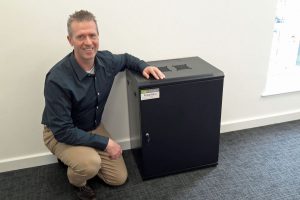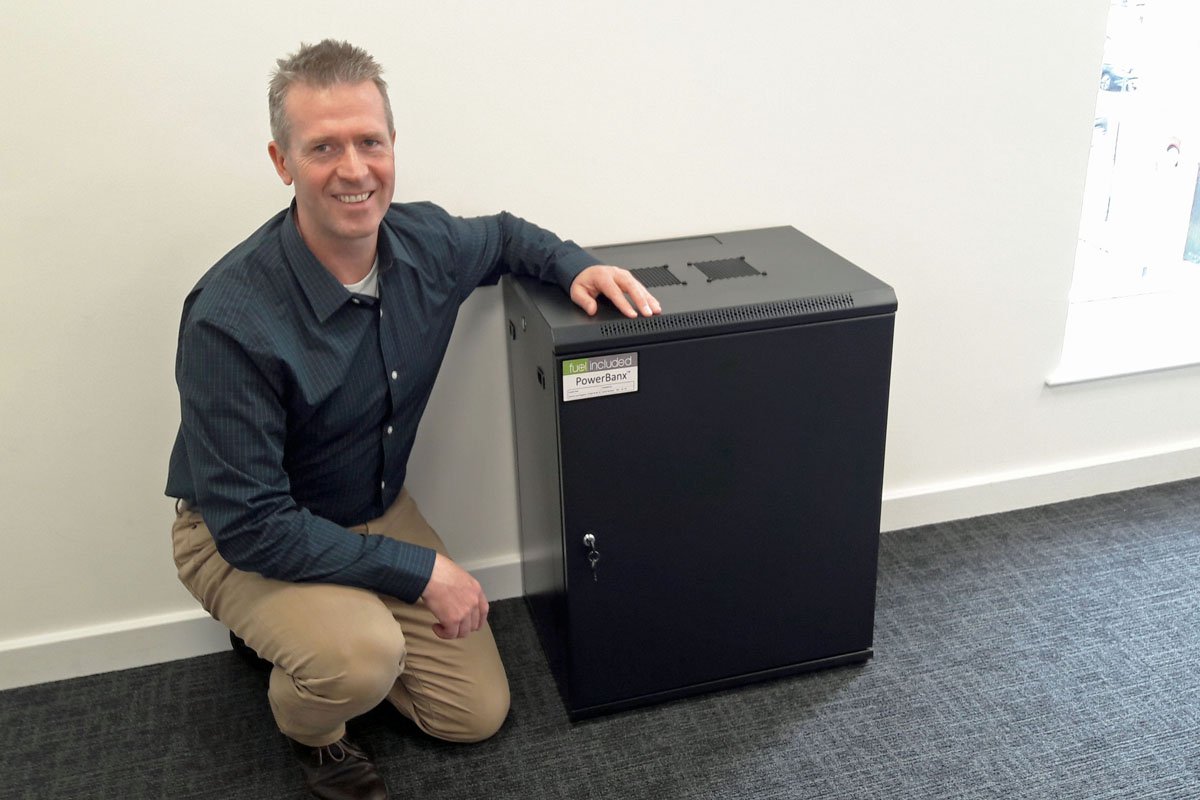Energy storage installations for homes and businesses — involving battery technology — are on the rise in areas where extreme weather threatens the electric power grid, such as flood-prone Houston, wildfire-stricken California and hurricane-ravaged Puerto Rico.
A sustained power outage can lead to serious consequences, such as loss of income and even death. Because of climate change, the frequency of these extreme weather events and outages will climb.

Tanjent’s PowerBanx X battery storage, in black enclosure (Image: Tanjent)
Traditionally, buildings would rely upon gas-powered diesel generators during outages. These generators have their own problems and do not necessarily help the electric grid become more resilient.
With recent technological changes, could batteries become the new generators?
Tracking sharp growth in the past year
Small-scale, so-called behind-the-meter energy storage accounted for 60% of battery capacity in the United States during the first quarter of this year.
Deployments grew 138% in the past year, driven in part by families and business leaders who are seeking resilience against power disruptions in our increasingly volatile climate.
When properly designed, electric energy storage can not only provide additional grid resilience, it can further minimize greenhouse gas and local air emissions compared with the conventional gas generators.
Read more: EDF



